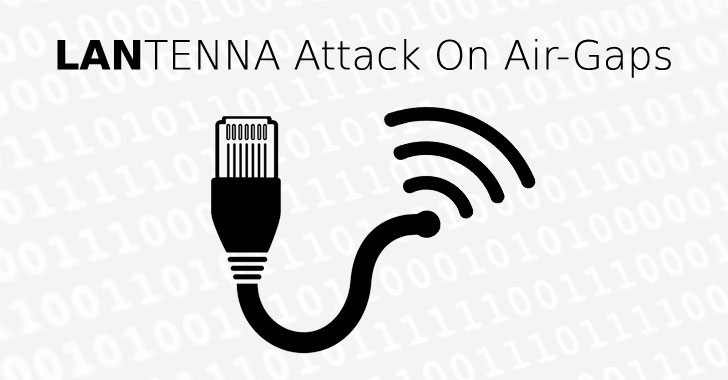- Aug 17, 2014
- 11,112
A newly discovered data exfiltration mechanism employs Ethernet cables as a "transmitting antenna" to stealthily siphon highly-sensitive data from air-gapped systems, according to the latest research.
"It's interesting that the wires that came to protect the air-gap become the vulnerability of the air gap in this attack," Dr. Mordechai Guri, the head of R&D in the Cyber Security Research Center in the Ben Gurion University of the Negev in Israel, told The Hacker News.
Dubbed "LANtenna Attack," the novel technique enables malicious code in air-gapped computers to amass sensitive data and then encode it over radio waves emanating from Ethernet cables just as if they are antennas. The transmitted signals can then be intercepted by a nearby software-defined radio (SDR) receiver wirelessly, decode the data, and send it to an attacker who is in an adjacent room.
"Notably, the malicious code can run in an ordinary user-mode process and successfully operate from within a virtual machine," the researchers noted in an accompanying paper titled "LANTENNA: Exfiltrating Data from Air-Gapped Networks via Ethernet Cables."

Creating Wireless Signals with Ethernet Cable to Steal Data from Air-Gapped Systems
Researchers demonstrated a new data exfiltration mechanism on Air-Gapped computers that uses ethernet cables to generate wireless signals.
 thehackernews.com
thehackernews.com